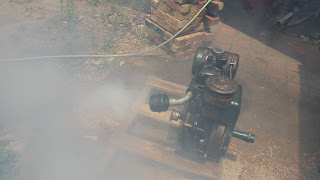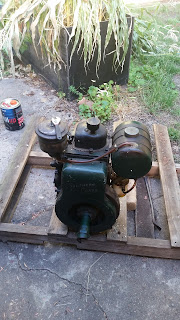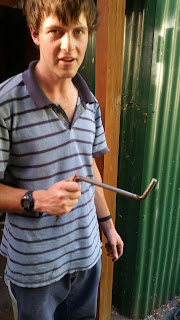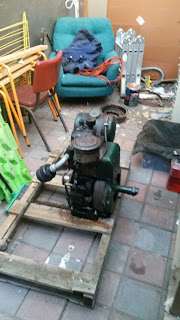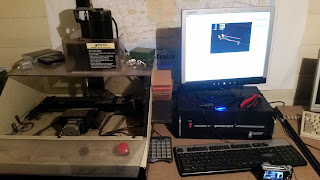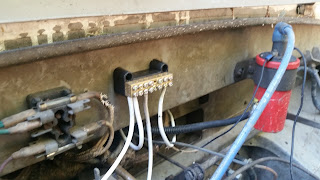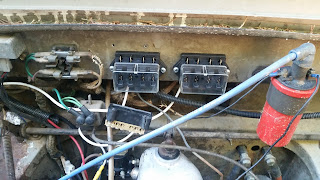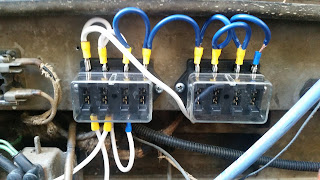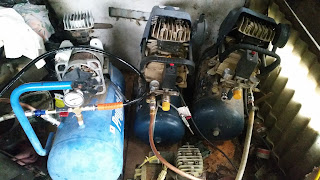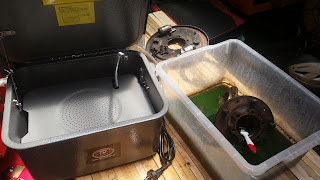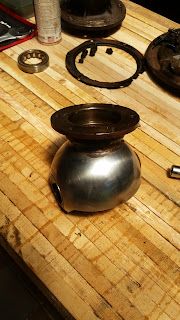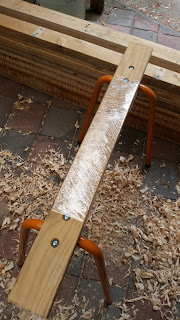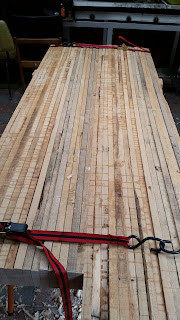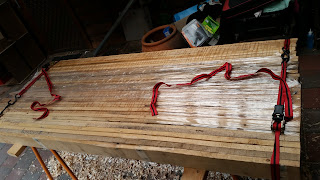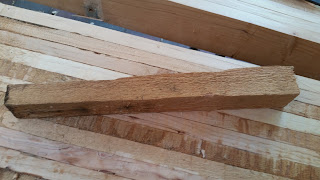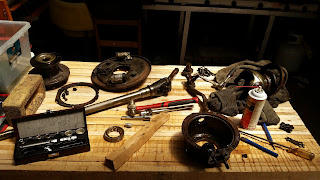This is it running after it clears up a little. You can still see a little haze out of the exhaust but it no longer looks like we set off a smoke bomb.
You may be wondering what is different to get this engine started to last time? Well it was suggested that we try driving it with a drill and a socket that will go over the crankshaft. That would work and I do have a drill that would be suitable. However I don't have any sockets big enough.
So rather than going out and buying something we figured it would be best to try with what's on hand first. So we came up with this:
It's a piece of rope that I had sitting around here wrapped around a fair few times. With this and someone to flip the decompression once it gets some speed up it's just about always first pull to start.
Another thing I like about this is that I feel it's much safer. As long as it doesn't get caught around your leg there isn't enough mass in the rope to hurt badly if it were to get thrown at you. Also if it were to get caught and not release then it is light enough that it shouldn't unbalance the engine. Making it a much less stressful process to stop if something goes wrong like that.
I have also cut down this rope so it is only about as long as it needs to be. This makes it a lot harder to catch yourself on it or tangle up in any way.
Here is a little Youtube clip of it running:
Now we just need to set up something to run from it. Now about that portable sawmill...
Cheers,
Rex
